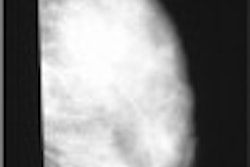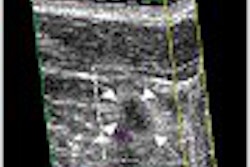Dear AuntMinnie Member,
Breast MRI has powerful advantages over x-ray-based mammography, but the technology may not be ready for prime time as a screening tool, at least not in the U.S. That’s the word from a brace of stories we’re featuring from this week’s American Society of Clinical Oncology meeting in Chicago.
The ASCO stories focus on the utility of breast MRI in high-risk women, specifically those who carry the BRCA1 and BRCA2 genes. These women are predisposed to developing cancer earlier in life, making early detection key. But complicating matters is the fact that mammography screening is often confounded by the presence of dense breast tissue in younger women.
Breast MRI could be a solution, and gets high marks for sensitivity. In one ASCO presentation, German researchers cited sensitivity ratings in the 96% range among high-risk women, compared to 43% for mammography and 47% for ultrasound. Another advantage of breast MRI is that it produces no ionizing radiation, a potential advantage in high-risk women, who may risk higher lifetime x-ray doses if they start screening earlier.
But a study by U.S. researchers was more equivocal. They also reported high sensitivity -- in their study, breast MRI scored a perfect 100%. But specificity was only 81%, with some 36% of studies initially classified as abnormal, and 21 biopsies needed to find three cancers in a population of 54 women (all of whom were BRCA1 or BRCA2 carriers).
The U.S. group also cited the high cost and technical challenges of breast MRI as barriers to more widespread implementation. Before the technology can be implemented as a screening tool for high-risk women, breast MRI scanning protocols must be developed, and more radiologists need to be trained specifically to conduct screening studies, according to one breast imaging expert who commented on the study.
Want more details? Just log on to either our MRI Digital Community, at mri.auntminnie.com, or our Women’s Imaging Digital Community, at womens.auntminnie.com.



















